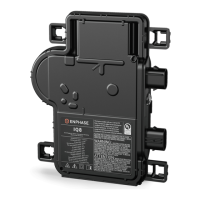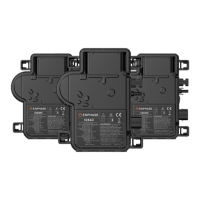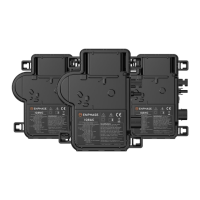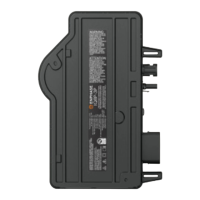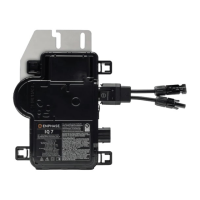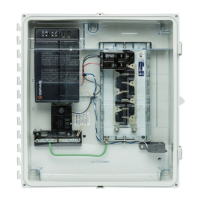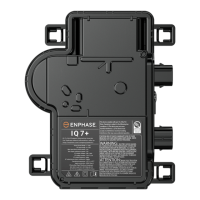IQ8 / IQ8+ / IQ8M / IQ8A / IQ8H Micro Installation and Operation
12 © 2022 Enphase Energy Inc. All rights reserved. Mar 2022
Branch Circuit Capacity
Plan your AC branch circuits to meet the following limits for maximum number of microinverters per branch when
protected with a 20 amp (maximum) over current protection device (OCPD).
NOTE: *Limits may vary. Refer to local requirements to define the number of microinverters per
branch in your area.
Utility Service Requirements
The Enphase IQ Series Micros work with single-phase service. Measure AC line voltages at the electrical utility
connection to confirm that it is within the ranges shown:
NOTE: All 208 VAC installations using IQ8H-208 Micros require that you use the Enphase IQ Gateway to
commission the Enphase Microinverters to propagate correct grid profile settings for 208 VAC trip points.
Wire Lengths and Voltage Rise
When planning the system, you must select the appropriate AC conductor size to minimize voltage rise. Select the
correct wire size based on the distance from the beginning of the microinverter AC branch circuit to the breaker in
the load center. Enphase recommends a voltage rise total of less than 2% for the sections from the microinverter AC
branch circuit to the breaker in the load center.
Enphase provides guidance about choosing wire size and maximum conductor lengths in the Voltage Rise
Technical Brief at enphase.com/support. Refer to this brief for voltage rise values in Enphase IQ Cables and on how
to calculate voltage rise in other wire sections of the system.
Standard guidelines for voltage rise on feeder and AC branch circuit conductors might not be sufficient for
microinverter AC branch circuits that contain the maximum allowable microinverters. This is due to high inherent
voltage rise on the AC branch circuit.
Best practice: Center-feed the branch circuit to minimize voltage rise in a fully populated branch. This
practice greatly reduces the voltage rise as compared with an end-fed branch. To center-feed a branch,
divide the circuit into two sub-branch circuits protected by a single OCPD.
